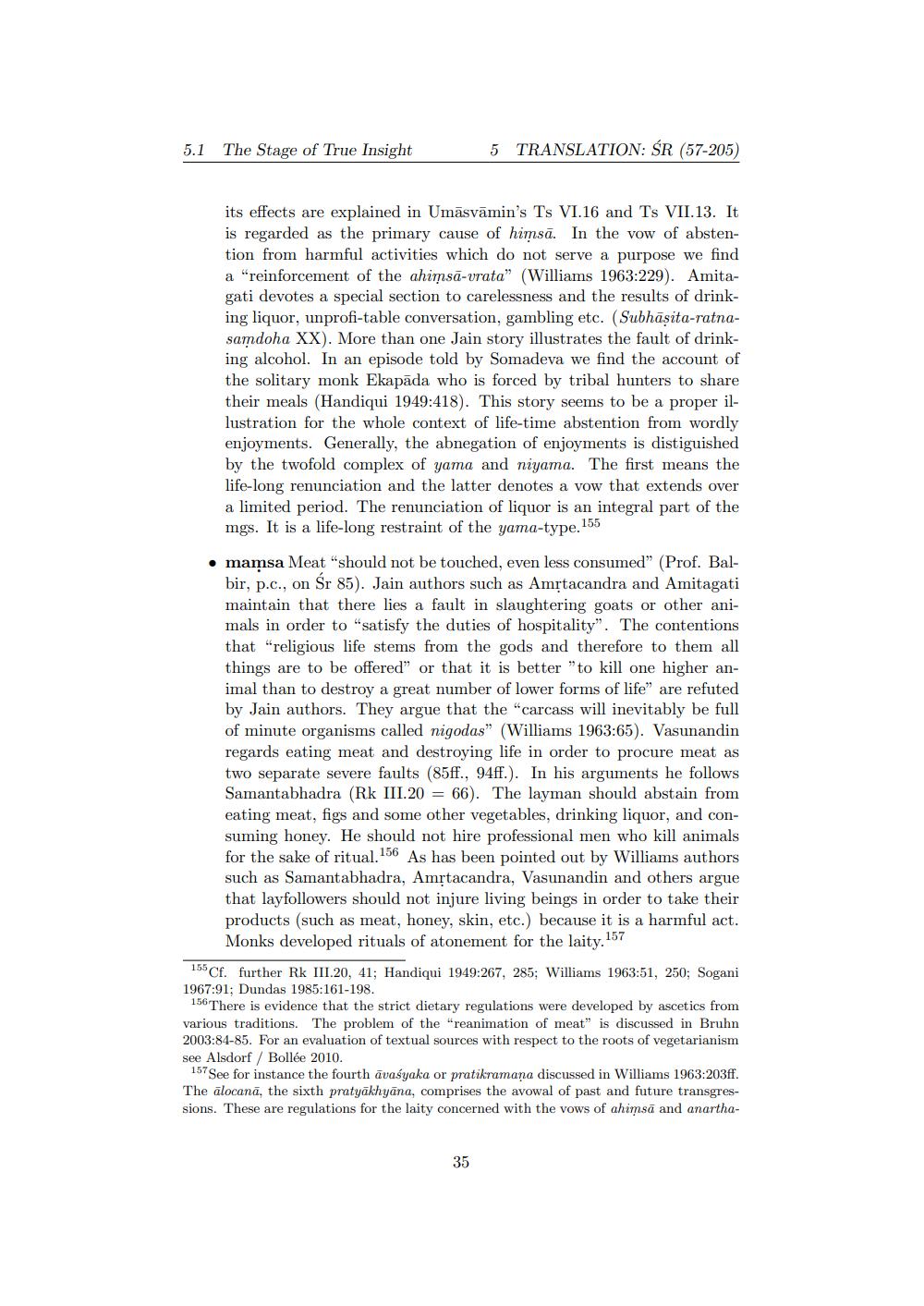________________
5.1
The Stage of True Insight
5 TRANSLATION: ŚR (57-205)
its effects are explained in Umāsvāmin's Ts VI.16 and TS VII. 13. It is regarded as the primary cause of himsā. In the vow of abstention from harmful activities which do not serve a purpose we find a "reinforcement of the ahimsa-vrata" (Williams 1963:229). Amitagati devotes a special section to carelessness and the results of drinking liquor, unprofi-table conversation, gambling etc. (Subhāşita-ratnasamdoha XX). More than one Jain story illustrates the fault of drinking alcohol. In an episode told by Somadeva we find the account of the solitary monk Ekapāda who is forced by tribal hunters to share their meals (Handiqui 1949:418). This story seems to be a proper illustration for the whole context of life-time abstention from wordly enjoyments. Generally, the abnegation of enjoyments is distiguished by the twofold complex of yama and niyama. The first means the life-long renunciation and the latter denotes a vow that extends over a limited period. The renunciation of liquor is an integral part of the mgs. It is a life-long restraint of the yama-type. 155
mamsa Meat "should not be touched, even less consumed" (Prof. Balbir, p.c.. on Sr 85). Jain authors such as Amrtacandra and Amitagati maintain that there lies a fault in slaughtering goats or other animals in order to "satisfy the duties of hospitality". The contentions that "religious life stems from the gods and therefore to them all things are to be offered" or that it is better "to kill one higher animal than to destroy a great number of lower forms of life" are refuted by Jain authors. They argue that the "carcass will inevitably be full of minute organisms called nigodas" (Williams 1963:65). Vasunandin regards eating meat and destroying life in order to procure meat as two separate severe faults (85ff., 94ff.). In his arguments he follows Samantabhadra (Rk III.20 = 66). The layman should abstain from eating meat, figs and some other vegetables, drinking liquor, and consuming honey. He should not hire professional men who kill animals for the sake of ritual.156 As has been pointed out by Williams authors such as Samantabhadra, Amrtacandra, Vasunandin and others argue that layfollowers should not injure living beings in order to take their products such as meat, honey, skin, etc.) because it is a harmful act. Monks developed rituals of atonement for the laity. 157
155 Cf. further Rk III.20, 41; Handiqui 1949:267, 285; Williams 1963:51, 250; Sogani 1967:91; Dundas 1985:161-198.
156 There is evidence that the strict dietary regulations were developed by ascetics from various traditions. The problem of the "reanimation of meat" is discussed in Bruhn 2003:84-85. For an evaluation of textual sources with respect to the roots of vegetarianism see Alsdorf / Bollée 2010.
157 See for instance the fourth āvasyaka or pratikramana discussed in Williams 1963:203ff. The alocanā, the sixth pratyakhyāna, comprises the avowal of past and future transgressions. These are regulations for the laity concerned with the vows of ahimsā and anartha




